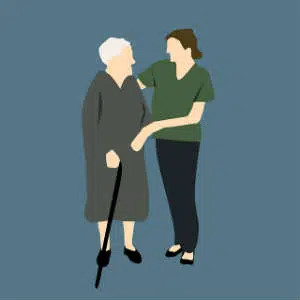

Senior homes have been the subject of a lot of bad press in the past decades. Nursing homes have been portrayed as institutions that are dank, medical facilities without personality where seniors go to spend their last months lying alone in bare medical beds. In fact, modern nursing homes are much more like a luxury hotel than any kind of institution. Families who have the money can put their loved ones into a community with lifestyle amenities that might include meals from a professional chef, an indoor swimming pool or on-site coffee shop.
The majority of seniors live in nursing homes that are somewhere in between the two extremes. Newly built homes attempt to present a homey environment, with furniture that you’d find in your typical suburban residence and an open layout to make it easier to get around. Administrators of older homes must often be creative to change the cloistering atmosphere into the newer, more uplifting 21st-century atmosphere. This can be a challenge when the level of care available is more reminiscent of the 1940s and 1950s. Fortunately, the Centers for Medicare & Medicaid have recently stepped up the level of care acceptable for nursing homes in the United States.
More than seventy percent of the nursing homes in the United States receive some or all of their funding from Medicaid. In 2016, Medicaid pays for 40% nationally of all long-term care. In an attempt to increase the quality of care available in nursing homes, the Centers for Medicare & Medicaid released new nursing home regulations in 2016. In addition to requiring a minimum staff to patient ratio, the regulations also attempt to provide senior residents with more personalized care and protection from mistreatment. Some of the requirements included in the new regulations include

The new CMS regulations involved 700 pages of suggested changes that were supposed to be implemented within a two-year period. The intention was to increase the general level of care and change modern nursing homes into more comfortable, home-like environment for seniors by allowing them more independence and choice in their care. These new regulations promise to create an environment that is safer and more nurturing. But there are many aspects of the new regulations that advocates don’t agree with. One of these is the lack of overall changes to staffing levels. Many feel that understaffing is a major problem in nursing homes and a large contributor to the lack of care, yet the new regulations don’t address the issue. In addition, many are concerned that all of these new regulations will simply drag administrators into a bureaucratic swamp of paperwork and policies, which will take their attention off of their residents.

Haberman Law is dedicated to representing the rights of victims of nursing home abuse and neglect.
Many of us turn to nursing homes, assisted living facilities, and group homes to provide care for our elderly loved ones.
If you suspect that a loved one was the victim of abuse or neglect in a nursing home, assisted living facility, or group home, contact us.
Call us for a free consultation:
215-240-7771
© 2025 PA Nursing Home Lawyers By Len Haberman, Esq. All Rights Reserved